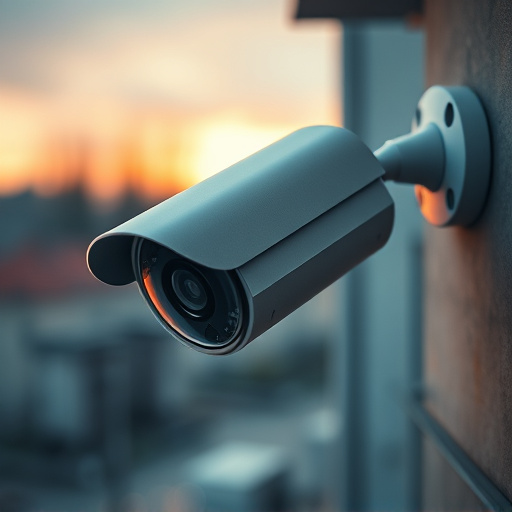Motion Activated Dummy Security Cameras strategically placed in high-risk areas deter criminals by simulating real surveillance, reducing crime likelihood. Though they lack actual footage capture and may be bypassed by advanced techniques, combining them with other security measures enhances overall protection for homes and businesses.
In today’s digital era, enhancing home or business security has become paramount. One innovative strategy gaining traction is the use of motion activated dummy security cameras. This article delves into the world of these fake camera placement strategies, offering insights on understanding their functionality, optimizing positioning for maximum deterrence, integrating them into your overall security plan, and exploring their unique benefits and limitations compared to real surveillance equipment.
- Understanding Motion Activated Dummy Cameras
- Choosing Optimal Placement for Maximum Deterrence
- Integrating Fake Cameras into Your Security Strategy
- Benefits and Limitations of Using Dummy Security Cameras
Understanding Motion Activated Dummy Cameras
Motion Activated Dummy Security Cameras are an innovative and cost-effective way to deter potential criminals. These cameras simulate real surveillance equipment, triggering motion sensors to capture activity in your home or business. By strategically placing them in visible areas, you create a powerful psychological barrier against unauthorized entry.
Unlike traditional security systems, dummy cameras offer a subtle yet effective solution. They blend seamlessly into their surroundings, making it difficult for intruders to identify the difference between real and fake. This deception can significantly reduce the likelihood of crime, as potential offenders may opt for an easier target.
Choosing Optimal Placement for Maximum Deterrence
Choosing the optimal placement for security cameras is a strategic process designed to maximize deterrence and enhance overall safety. When it comes to motion-activated dummy security cameras, the goal remains the same – to create an illusion of surveillance that discourages potential criminals. Strategically placing these fake cameras in high-risk areas, such as entry points, alleyways, or dark corners, can significantly increase the perceived risk for would-be intruders.
By simulating actual camera activity, dummy security cameras trick offenders into believing they are under constant observation, acting as a powerful psychological deterrent. To maximize their effectiveness, these cameras should be positioned at eye level or slightly elevated to capture clear footage while appearing natural in their surroundings. Additionally, ensuring adequate visibility and coverage of potential entry points or areas prone to crime can further bolster the deterrence factor, making them invaluable tools for enhancing home or business security.
Integrating Fake Cameras into Your Security Strategy
Integrating fake security camera placement, specifically motion-activated dummy security cameras, into your overall security strategy offers a multi-faceted approach to deterring potential intruders. These devices serve as powerful visual deterrents, misleading would-be criminals by simulating active surveillance throughout your property. By strategically placing them in high-risk areas like entry points, parking lots, and blind spots, you create the perception of enhanced security.
Remember that effective placement goes beyond just seeing where shadows fall. Consider factors like line-of-sight, camera angle, and the visibility of surrounding objects. When incorporated thoughtfully, dummy cameras can complement your real surveillance system, increasing overall effectiveness and providing an additional layer of protection for your home or business.
Benefits and Limitations of Using Dummy Security Cameras
Using motion activated dummy security cameras offers several advantages for enhancing home or business security. One of their key benefits is deterrence; visible cameras, whether real or fake, can significantly reduce crime rates as potential intruders are less likely to target locations with apparent surveillance. These dummy cameras provide an affordable and effective way to create a false sense of security, especially in areas where the installation of actual security systems might be cost-prohibitive. They also serve as valuable decoys during critical security events, drawing attention away from vulnerable points while real security measures kick in.
However, there are limitations to consider. While dummy cameras can be useful, they do not offer real-time monitoring or recording capabilities. Unlike their functional counterparts, these devices do not capture actual footage of incidents, which can be crucial for later evidence and investigation purposes. Moreover, advanced intruder techniques, such as recognizing the difference between genuine and fake cameras, could potentially render them less effective over time. Therefore, it’s essential to use these decoys in conjunction with other security measures for optimal protection.
Motion Activated Dummy Security Cameras offer a cost-effective way to enhance your property’s security and deter potential criminals. By strategically placing these realistic fake cameras, you can create an illusion of advanced surveillance, significantly reducing break-ins and thefts. Integrating them into your overall security strategy allows for a multi-layered approach, providing both physical and psychological benefits. While dummy cameras have limitations, their use as part of a comprehensive security plan can be highly effective in making your property less appealing to intruders.
